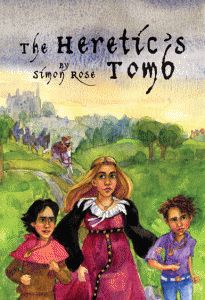Historical Fiction: Part Six- Plausibility
 Even though your historical fiction story is set in a different time period, the reader still needs to believe that the events depicted could have really happened. Readers and fans of historical fiction appreciate the story being plausible and believable. Many are fans of certain eras and know a considerable amount about the time, whether from their own reading and research or from other novels set in the same period. As a result they’ll alway be very quick to notice and indeed perhaps point out errors or unbelievable aspects in your work.
Even though your historical fiction story is set in a different time period, the reader still needs to believe that the events depicted could have really happened. Readers and fans of historical fiction appreciate the story being plausible and believable. Many are fans of certain eras and know a considerable amount about the time, whether from their own reading and research or from other novels set in the same period. As a result they’ll alway be very quick to notice and indeed perhaps point out errors or unbelievable aspects in your work.
Obviously the author needs to do research into the period, whether this involves weaponry, clothing or living conditions, as well as the personalities and events of the time. If you don’t have the luxury of visiting archaeological sites and museums to do research in person, there are plenty of places online where this information can be studied. This includes contemporary accounts written by people who lived at the time that can go a long way toward you really getting to grips with what life was like in your chosen historical period.
However, it’s not all about description or even getting all your facts straight when it comes to historical eras. Even though you’ve spent your life in the modern age, it’s important to try and put yourself into the mind of your characters and imagine how they would have viewed their world and reacted to everything around them. If you can accurately recreate the time period in which the story takes place the reader will get a true sense of place. If readers really feel like they’re living in a medieval castle, watching the pyramids being built, walking the streets of Victorian London, or viewing the preparations for a Napoleonic naval battle, the author has done a successful job.



